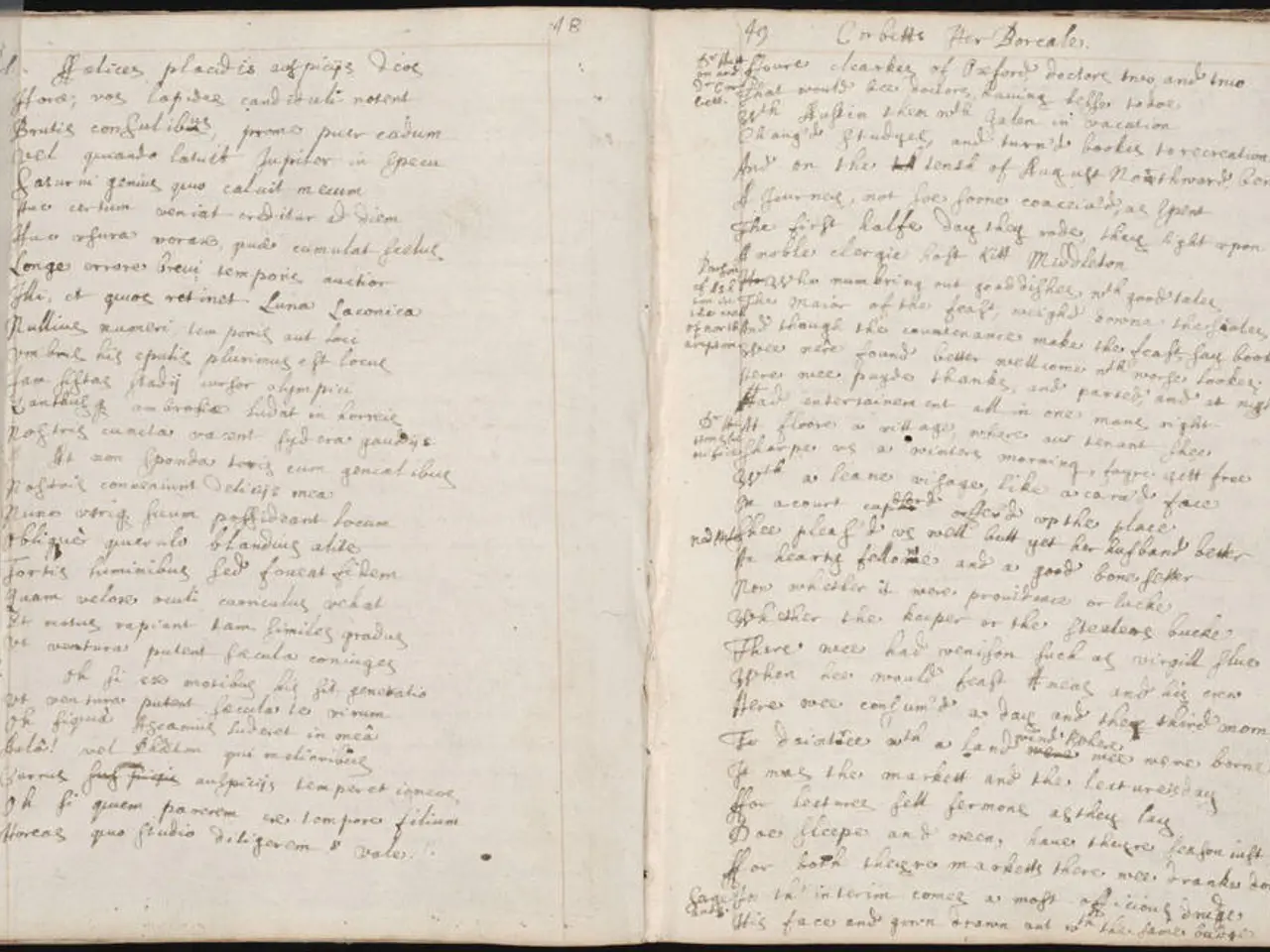Unforeseen Paths of the Narrative Journey
In the world of writing, there are two distinct approaches that authors can take - plotting and pantsing. Let's delve into these two methods and understand how they shape the creative process.
Plotting is a meticulous and structured approach where authors plan their stories in detail before diving into the writing process. This includes creating chapter outlines, character profiles, scene breakdowns, and mapping the story’s major beats or emotional arcs. Plotters like to have a clear roadmap, which helps prevent plot holes, ensures better pacing, and makes co-writing more organized.
On the other hand, pantsing, or writing by the seat of your pants, is a more spontaneous and organic approach. Pantsers start writing with just a rough idea or premise and discover the story as they go along. This style encourages creativity and surprises, but it can lead to more extensive revisions to fix plot holes or pacing issues.
A comparison between these two styles might look something like this:
| Aspect | Plotting | Pantsing | |-------------------------|--------------------------------------|------------------------------------| | Planning | Detailed outlines, structured plans | Minimal or no pre-writing plan | | Story development | Predetermined plot path | Story evolves during writing | | Advantages | Prevents plot holes; better pacing | Encourages creativity; surprises | | Challenges | Can feel restrictive or stifling | May require heavy rewrites | | Example | Using the Snowflake Method to outline a mystery novel before writing | Starting a fantasy novel and discovering plot twists through spontaneous writing |
Some writers even use a hybrid approach called “plantsing” or “discovery writing with breadcrumbs,” where they create a minimal framework and write freely within that structure to balance planning and spontaneity.
Currently, an author is working on a new writing project using the pantsing approach. Despite having a clear idea of what will happen leading up to when the male and female leads meet, the author is uncertain about what will transpire after their encounter, including their reactions, first impressions, the development of any romantic relationship, and the future of their relationship.
For first-time pantsers, the author advises jotting down anything that pertains to their story, as it may be useful later. This could include character traits, plot ideas, or even snippets of dialogue.
In conclusion, whether you're a plotter or a pantser, each approach has its advantages and challenges. The key is to find the method that best suits your writing style and allows you to tell the story you want to tell in the most effective way possible.
In the realm beyond writes, one can explore home and garden lifestyle, a creative process that requires neither chapter outlines nor character profiles. Here, inspiration leads the way as one plans neither in detail nor with a clear roadmap (pantsing). On the other hand, those who prefer to arrange their home and garden layouts with meticulousness, much like planning a story, can opt for home-and-garden plotting. This method might involve creating design maps, outlining landscaping projects, or planning the growth of plants across seasons, mirroring a writer's chapter outlines, character profiles, and plot beats.





